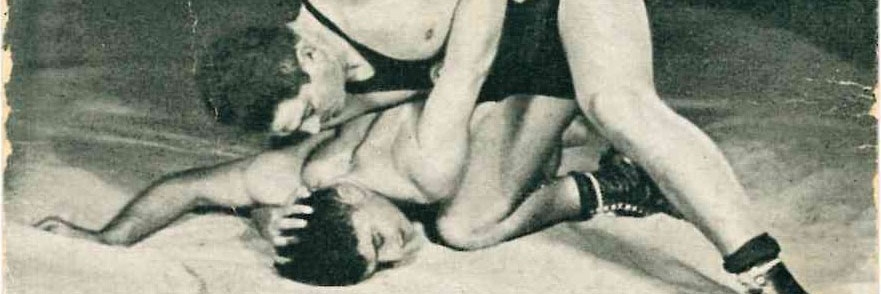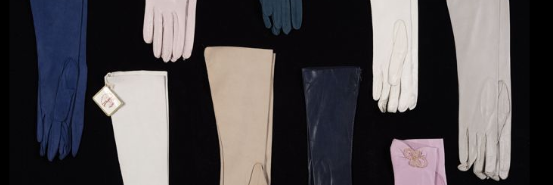
New Archival Collections
The Leo Baeck Institute is continually collecting new archival materials related to the history of German-speaking Jews. View Collection

Zalman Unreich On
The incredible story of Zalman Unreich On, a wrestler from Bratislava, Czechoslovakia who became an undercover Israeli spy. View Collection

Judging a book by its cover
The Leo Baeck Institute library has a large collection of German language literature from the Weimar era. These are just a small selection of books with striking cover illustrations. View Collection
LBI collections grew out of our founders’ effort to salvage the material and intellectual culture of German-speaking Jews that was nearly lost in the Holocaust. Today, these collections are an essential resource for scholars, genealogists, families, educators, students, and the public.
- Our Online Catalog provides the descriptions of all our collections with links to digitized forms when already available.
- Please contact LBI's Dr. Robert Ira Lewy Reference Service for collection related questions.
- See also our Reproductions and Permissions policies and order form.
- Related: Guide to LBI's Online Catalog
- In the tiles below you can browse selected highlights of the collections.
The LBI Archives preserves over 13,000 archival collections, consisting of millions of pages of correspondence, genealogical materials, and business and civil records that touch upon virtually every aspect of the German-Jewish experience; in addition to more than 4,000 memoirs and manuscripts, more than 25,000 photographs, and about 1000 audio interviews. Entrusted to LBI by refugees from Nazi-occupied Europe and their descendants, these papers document the lives and work of luminaries such as Albert Einstein and Joseph Roth as well as ordinary people from all walks of life since the 18th century.
- Search all archival collections through our Online Catalog which also provides links to already digitized collections.
- Browse digitized archival collections through our DigiBaeck Website.
- Access larger archival collections through their Finding Aids which feature scope, historical, and biographical notes.
- Monitor additions here: New Archival Collections.
- In the tiles below you can browse selected highlights of the archival collections.
LBI’s 80,000-volume library is internationally recognized as the world’s foremost collection focused on the history of German-speaking Jews. Rich in rarities including early Renaissance-era pamphlets, first editions of works by Moses Mendelssohn, Heinrich Heine, and Franz Kafka, and limited edition art books, the Library also collects the latest publications in the field. A comprehensive collection of periodicals encompasses publications ranging from congregation bulletins to the major émigré paper, Aufbau.
- Search all library holdings through our Online Catalog which also provides links to already digitized collections
- Browse digitized library collections through our DigiBaeck website.
- Browse digitized periodicals at LBI's Periodicals at Internet Archives.
- Monitor new purchases here: New Library Acquisitions.
- Library Collection Development Policy
- In the tiles below you can browse selected highlights of the library collection.
From engravings depicting Jewish life in German lands in the 16th century to abstract works by German-Jewish émigrés in the second half of the 20th century to everyday life objects, the works in the art and objects collection complement the archival and library collections as a visual record of German-Jewish history. Among the thousands of paintings, sculptures, watercolors, drawings, prints, and objects are many fine works of great artistic and historical significance. More importantly, the art collection in its totality forms an unparalleled documentation of the material culture of German-speaking Jewry.
- Search all art and objects through our Online Catalog which also provides links to already digitized collections.
- Browse digitized art works and objects through our DigiBaeck website.
- Browse a selection of digitized arts works and objects in the Edythe Griffinger Portal.
- Monitor New Additions to the Art and Object Collection.
- In the tiles below you can browse selected highlights of the art and object collection.

